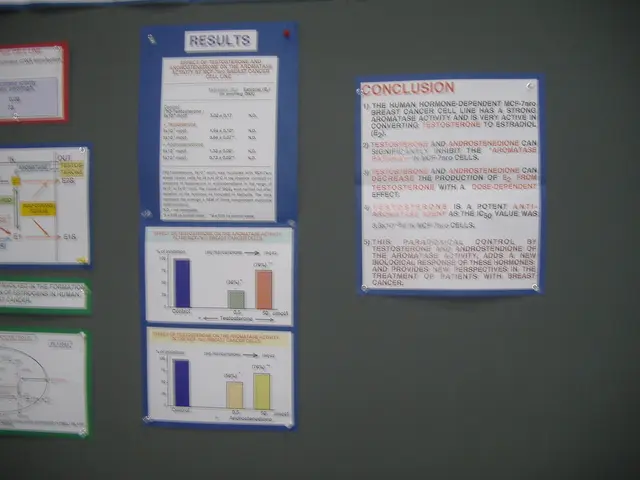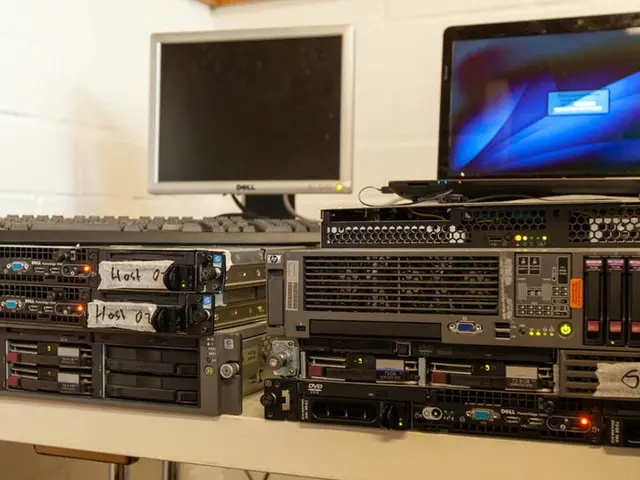Boosting Manufacture Efficiency: A Handbook for Selecting the Ideal Production Technique
In the ever-evolving landscape of manufacturing, two significant movements are making waves: Lean Manufacturing and Industry 4.0.
Lean Manufacturing, a philosophy emphasising the elimination of waste and maximising value throughout the entire production process, is gaining traction among leading companies. SAP and Pikatron, for instance, are combining Lean Manufacturing principles with Industry 4.0 technologies, such as digital logistics solutions and automation, to optimise production efficiency, cost control, and quality.
Industry 4.0, the ongoing technological revolution transforming manufacturing processes, holds immense potential in enhancing efficiency and productivity. This revolution is blurring the lines between labor-intensive and capital-intensive methods, with advanced technologies playing a pivotal role.
However, the implementation of Industry 4.0 technologies often requires significant upfront investments in equipment, software, and infrastructure. Robotics and automation, for example, are increasingly taking over repetitive tasks, improving production speed and consistency. The Industrial Internet of Things (IIoT), another key aspect of Industry 4.0, connects machines, sensors, and devices to a network for real-time data collection and monitoring.
Artificial Intelligence (AI) algorithms can analyse production data to identify trends, optimise processes, and predict potential problems before they occur. This data-driven approach is revolutionising the way businesses approach production, fostering a culture of continuous improvement (Kaizen).
Yet, increased reliance on interconnected systems in Industry 4.0 raises cybersecurity risks. Robust measures are necessary to protect sensitive data and ensure the integrity of these systems.
As automation takes over some tasks, businesses will need to invest in and upskill their workforce to adapt to the changing landscape. Employee empowerment is valued in lean manufacturing, encouraging their involvement in problem-solving and process improvement.
The optimal production method depends on various factors, including product type, demand volume, target market, resource availability, and business size. Small businesses often utilise job or batch production, while large enterprises might leverage flow production for higher volumes. Unique, high-complexity products might necessitate job production, while standardised, high-volume goods are suited for flow production.
High and stable demand favours flow production, whereas job production methods might better serve less frequent demand. Niche markets often require job production for customisation, while mass markets can be catered to by flow production.
Industry 4.0 may allow for high-volume production with a greater degree of personalisation, catering to diverse customer preferences. Just-in-Time (JIT) inventory management, a principle of lean manufacturing, advocates for holding minimal inventory and receiving materials only when they are needed for production. This approach can help businesses save on storage costs and reduce the risk of outdated inventory.
In conclusion, the intersection of Lean Manufacturing and Industry 4.0 is reshaping the manufacturing industry. By embracing these philosophies and technologies, businesses can optimise their production processes, enhance flexibility, reduce errors, and better serve their customers' needs.
Read also:
- Catastrophe at a U.S. Steel facility in Pennsylvania results in the loss of two lives. crucial details unveiled
- Fructose Market Set to Top USD 8.1 Billion by 2034
- Powered by BMW, the Morgan Supersport Hails as a 335HP Ode to Britain's Motor Tradition
- Scout Motors Confident about Steady Electric Vehicle Sales during 2027 Launch on WardsAuto Podcast








